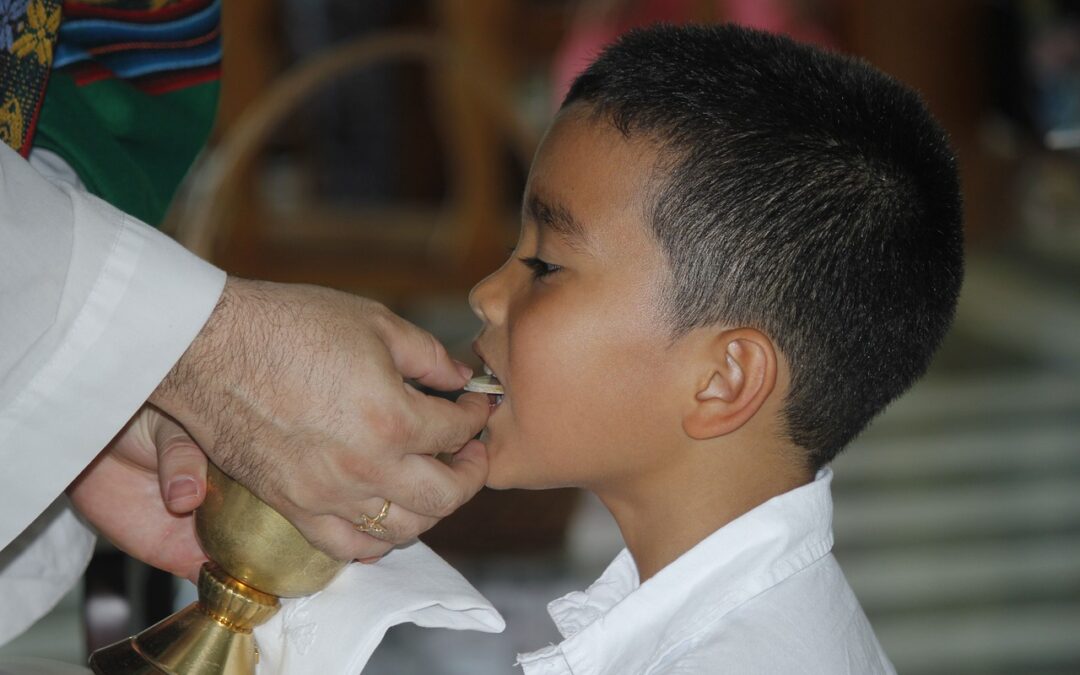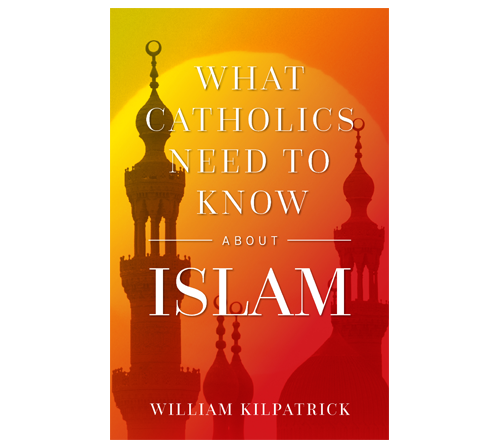A 2019 PEW poll showed that less than one third of U.S Catholics believe in the Real Presence of Christ in the Eucharist. By contrast, 69 % said they believed the bread and wine “are symbols of the body and blood of Jesus Christ.”
In response, the United State Conference of Catholic Bishops (USCCB) called for a multi-year National Eucharistic Revival Campaign in order to raise awareness of the Real Presence.
In July of 2024, the Real Presence Coalition (RPC), an informal group of influential lay Catholics, commissioned a national polling firm, Public Opinion Strategies, to conduct a survey of faithful Catholics to uncover the reasons for the loss of faith in the Real Presence and to recommend solutions.
In mid-October, the RPC published the findings of the survey and submitted them to the bishop’s conference for their consideration when they meet this November.
Hopefully, the bishops will pay attention because the survey results provide many insights into the causes of the loss of faith in the Real Presence as well as solid recommendations for reviving faith in one of the central teachings of the Catholic Church.
Here are six recommendations provided by the Real Presence Coalition:
- Encourage the practice of receiving the Eucharist on the tongue while kneeling
- Catechize the faithful (fully 43 % of Catholics who believed that the bread and wine are only symbols, erroneously believed that this is what the Church teaches)
- Encourage greater reverence for the Eucharist (through proper dress and manner, etc.)
- Eliminate Extraordinary Ministers of Holy Communion.
- Withhold the Eucharist from public officials who obstinately reject Catholic teaching.
- Increase the number of Eucharistic events (e.g., Eucharistic Adoration, Eucharistic processions, etc.)
In short, the survey results strongly encourage the time-tested method of religious education known as “lex orandi, lex credendi” (The law of prayer is the law of belief.)
It certainly worked for me when, as a child, I attended Mass with my family at St. Joseph’s, the magnificent gothic cathedral in Hartford, Connecticut. The Mass was in Latin, incense rose from the altar and the sound of Gregorian chant filled the church (the original cathedral, it should be noted, was destroyed by fire in 1956).
The liturgy reinforced everything we were learning in our catechism classes about the deep mystery of the Eucharist, and the proper reverential response to the Real Presence of Christ. In those days it was hard to imagine how anyone could be casual about the reception of Holy Communion.
So, if lex orandi worked once, it ought to work again. The hope is that once Catholics are better catechized, learn greater respect for the Eucharist, and adopt a more reverent liturgy, faith in the Real Presence will come almost automatically.
But few things come automatically, and there are reasons to believe that the road back to a fuller appreciation of the Eucharist will be strewn with obstacles. It’s not only the sense of the sacred that needs to be recovered, but also a sense of reality. The shift to the Novus Ordo liturgy in the mid-sixties was part of a much larger paradigm shift—a shift away from reality.
One largely unexamined cause of the loss of faith in the Real Presence is that more and more people have come to reject the idea of reality itself. In the mid-sixties, the Eastern idea that reality is an illusion became popular among some prominent American psychologists. Carl Rogers, a leading figure in the human potential movement, included a chapter entitled “Do we Need a Reality?” in one of his last books. The answer? No, we don’t. “There are as many realities as there are people,” wrote Rogers, “and what is real for me now is not real for me tomorrow.”
One of the main takeaways from reading Rogers or the many popularizers of his ideas is that we are not bound by other peoples’ realities. Rather we should create our own reality. This, of course, is just another way of saying that reality is subjective: each self is the final arbiter of what is real.
Of course, most people don’t take the idea that reality is subjective to its logical conclusion. If we jump off a tall building, we don’t expect that the law of gravity will be suspended for our sake. We understand that there’s no escaping the real presence of the pavement below.
Yet, when it comes to other matters, we are all too ready to deny important realities. When confronted with the “inconvenient “real presence of a baby in his mother’s womb, we can come up with numerous ways of denying or minimizing that reality. Likewise, when confronted with irrefutable biological evidence of la difference, many still insist that a man can become a woman and a woman can become a man. Moreover, they contend that a “marriage” between two people of the same sex is the real thing, and that there is nothing wrong with letting boys into the girls’ shower area. Given the denialist nature of our culture, it should be no surprise that almost 70 percent of Catholics now think of the consecrated bread and wine as merely a symbol. One can chalk this ignorance up to poor catechizes, but there seems to be something else at play. The scriptural evidence for the Real Presence is so overwhelming (particularly in John 6) that one has to suspect that some catechists and religion teachers are deliberately withholding it.
One thing that bishops and Catholic educators who want to revive belief in the Real Presence should consider is that many Catholics simply don’t want to believe in the Real Presence. It’s quite probable that many prefer to think of the Eucharist as a symbol.
One of the reasons the idea is so seductive is that objective reality makes demands on us. The sacrament of marriage, for example, binds us to another person ‘til death do us part.” It’s not for nothing that newly marrieds are said to have “tied the knot.”
For millennia, all of this was largely accepted in Christian cultures as the right way to look at marriage, the Eucharist, Holy Orders and the other sacraments. They had a binding nature. Then came the “Me decades” with its emphasis on self-actualization and self-esteem, and much of the older emphasis on self-denial, responsibilities, and obligations was washed away. Instead, we came to believe that we each had infinite potentials and that we owed it to ourselves to keep our options open.
The revolt against reality in our society came at a time when psychologists and self-help gurus were insisting that we all have unlimited potentials. We can, they assured us, become anything we want and do anything we desire. But, at some level, most people understand that reality limits us. A real marriage binds us to one person rather than another, a pregnancy is a reality that creates new responsibilities and obligations. In almost all cases, the arrival of a new baby means that many of our potentials will have to be left unfulfilled.
Likewise, the Real Presence of Christ in the Eucharist also makes demands on us. Are we worthy to receive? Should we make an examination of conscience? Go to confession? Or, in the spirit of the times, should we just assume that we’re okay with God who, in the modern view is all-understanding and more non-judgmental than any therapist?
Before receiving communion, the faithful pray, “O Lord I am not worthy,” but after sixty years of exposure to self-esteem psychology in Catholic schools, colleges, and seminaries, many Catholics feel just fine about themselves. They don’t want to do any deep dive into the state of their souls that might upset their therapeutic equilibrium. That’s why so many Catholics prefer to think of the Eucharist as merely a symbol. We now live in a culture that stands in almost total opposition to any sense of unworthiness.
Standing with one foot in Catholic culture and the other in the therapeutic culture can create a lot of tension, but the tension can be relieved by demoting the Eucharist to a symbolic status. As Flannery O’Connor once remarked, “If it’s just a symbol, to hell with it.” She understood that a world of endless signs and symbols with no reality at the core should not be taken seriously.
One of the recommendations of the Real Presence Coalition which ties in here is that the Eucharist should be withheld from public officials who obstinately reject Catholic teaching. Currently, there are numerous public officials in the U.S. who receive communion despite the fact that they obstinately reject Catholic teaching about abortion, same-sex “marriage” and other issues. The fact that the Church has done practically nothing about it suggests that many in the hierarchy don’t take the Real Presence seriously.
To add insult to injury, Pope Francis himself has made it clear that, as far as he is concerned, the Eucharist is no big deal. When Nancy Pelosi showed up at the altar rail in St. Peter’s shortly after Archbishop Cordileone forbade her from receiving in San Francisco, no objection was raised in the Vatican. In fact, Francis warmly greeted Pelosi and her husband upon their arrival.
Catholicism is a reality-based faith, and many in the hierarchy are badly in need of a dose of that reality. One only has to consider the unreality of the Synod on Synodality to see the problem. The Synod participants have spent the last five years searching for the signs of the times with little to show for it. Indeed, the Synod’s meanderings lend credence to Macbeth’s conclusion that “life is a tale told by an idiot…signifying nothing.”
Well, there may be exceptions.Some of the symbols now floating around in the Church do seem to have an obvious meaning. Take the Vatican’s cute new animie-like mascot for the Holy Year 2025 . Her name is “Luce.” She seems to signify something, but what she signifies may not be very pleasant. Why, for example, does she carry a witch’s stang and a rainbow-colored rosary? “Luce?” It’s likely that Vatican prelates who have recognized the name and noticed the stang are anxiously hoping that hell, also, is just a symbol.
Pictured above: First Communion
Picture credit: Pixabay


